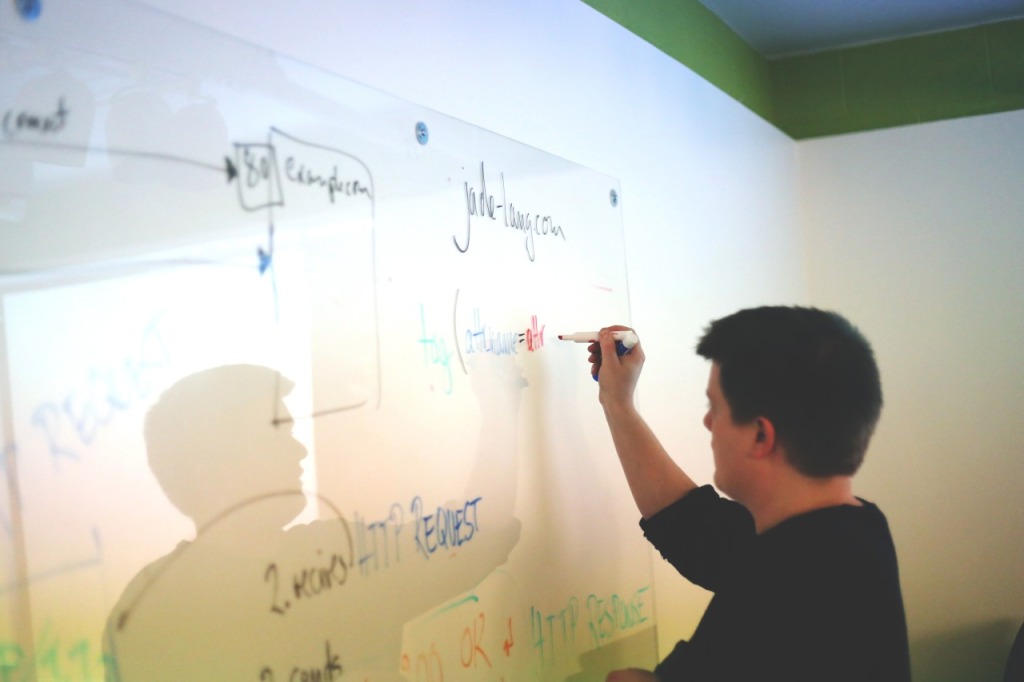Where do I start with DevOps?
Working in IT Operations is hard like really hard. Most of you who have been doing for years already know this. Technical debt seems to pile up and developer/operations are constantly being asked to more with less. Most companies are now an IT organization which puts more pressure from the business to help generate revenue.
DevOps is the key to helping IT operations transform from a fragile chaos ridden teams into agile disciplined teams. Sounds like another absurd promise from the buzzword of the day. I’d probably think that way, however, my back ground as a Scrum Master tells me it’s true. In the the developer realm we have been using agile frameworks since the Agile Manifesto was written in 2001. Yes we have a Manifesto!
Phoenix Project Book?
Before jumping in head first I recommend reading The Phoenix Project. It’s a fictional account of a company where everything that can go wrong does go wrong. Of course the problems all fall on IT operations. The book walks through how a company can transform from a traditional IT organization that is seen as a cost center into a revenue generating part of the company.
Find out more by watching my review of The Phoenix Project and DevOps.
Be sure to subscribe to my YouTube channel to get my latest videos.
Transcript
Thomas Henson here with thomashenson.com. Today, we’re going to do a book review on the Phoenix Project. If you’re interested in DevOps, stay tuned.
Book Review
The Phoenix Project is a fictional account of an IT organization. You’re probably saying, “Hey, that sounds kind of boring. Why would I want to read a fictional account of an IT organization?” But it’s actually a really good read. It goes through a fictional account of Parts Unlimited, which is an aging company that’s in a very competitive environment. The IT organization just can’t seem to get everything together with all the requirements that’s being put on them. They have a CEO that’s on CNBC a lot promising this new application. The application has been in development for quite a long time and they just can’t seem to get it to market. You follow around the VP of IT, as he’s new into the role, been with the company for a while, and you see a lot of the challenges that they have.
My Perspective
From my perspective, it’s a really good book, because I just came in from the application development side and started working with IT operations people. For me, I’ve started seeing some of the challenges that they have. Coming from the Agile environment and doing Scrum, I realized hey, we can get our requirements out; we can test things; we can push new features out very quickly, but a lot of our challenges come from testing with the operations side. I remember sitting in a meeting one time, and the customer was asking about all the things that we were doing. He was really happy about them, but then he switched to questions about, “Hey, how is this going to be maintained from an operational perspective?” I was like, “I’m not really sure why you’re asking me. We’ve got all these cool features. It’s going to be an awesome project. It’s meeting all the requirements that you have. Here’s the requirements that we need to support that. Now, in the out years, I’m not sure how big the project is going to grow, because it’s just going to be awesome.” I really got beat up in that meeting about those questions. It’s like okay, you’re creating this application, but what’s it going to do in the future? How is it going to balloon up? What’s the cost to maintain an application? How complex is it? One of the things I was thinking when we were working through it is, “Yeah, there are some challenges, and it’s a new system that the operations people have to learn, but everybody wants to learn Linux.” The question was, “Well, we’re going to have to hire somebody. We’re going to have to pay for training.” Those are the things I really didn’t think about. This book puts it into perspective.
Book Examples
One of the examples that they use in it is that a lot of times, developers take a pig, and they throw the pig over the wall. They high five each other, because everything is done. But that pig is given to the operations side with little or no instructions. It’s something that they have to maintain for years on end, where application developers, we get to go to the next project. I thought it was a really interesting read. I thought it was really good, especially for somebody that’s done Agile development on the development side but never really thought about it from a DevOps perspective of how is this going to be used in operations?
Would I Recommend It?
I would recommend this book for anybody, whether you’re a developer, work in IT operations, or even just curious about how IT should work in your organization. It’s a really good book. It’s a really quick read, too. I think you can probably do it… I think it did it over in a weekend. It’s a really good book. You should check it out. For more updates, stay tuned to thomashenson.com.









